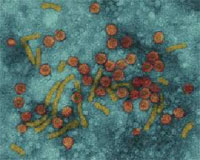CaPtivate
Pharmaceuticals
Product Development
Intranasal HBsAg Vaccine
Chronic Infection with Hepatitis B virus (HBV) is the most common cause of chronic liver disease, cirrhosis, and liver cancer. Despite the availability of a prophylactic vaccine, hepatitis B continues to remain as a serious global health problem. The main limitations with the currently approved vaccines have been:

|
|
Availability of an intranasal vaccine would be a major improvement over the existing hepatitis B immunization program for many reasons:
| (i) | Eliminating the need for multiple injections would increase user compliance, reduce the spread of transmissible diseases via contaminated needles, minimizes risk of accidental exposure to infectious pathogens. Enhanced compliance to full immunization regimen would also help prevent mother to newborn infections and spread of the disease in next generations. |
| (ii) | An "all IN" immunization will be more affordable to use for developing nations; would not require use of sterile needles or syringes, may not require trained health care worker to administer the vaccine, can also be integrated in the current hepatitis B immunization schedule to offer intranasal route as the alternative booster method. |
| (iii) | It would be possible to induce enhanced immunity by stimulating additional immune responses which could not be generated with the existing vaccines. Stimulation of these responses would be a viable strategy to overcome the HBV-related systemic down regulation in traditionally "non responders". |

